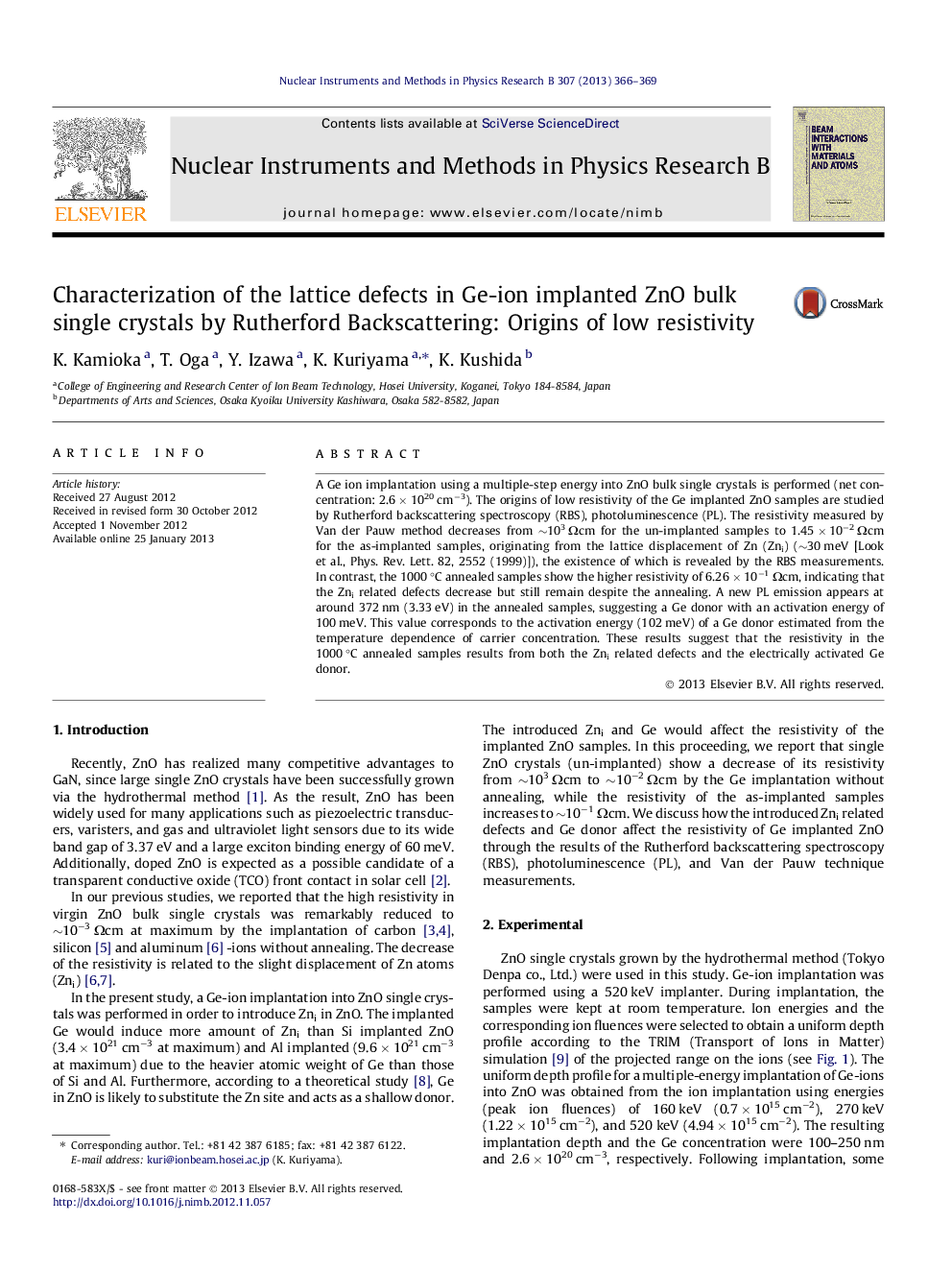| کد مقاله | کد نشریه | سال انتشار | مقاله انگلیسی | نسخه تمام متن |
|---|---|---|---|---|
| 1682023 | 1518710 | 2013 | 4 صفحه PDF | دانلود رایگان |

A Ge ion implantation using a multiple-step energy into ZnO bulk single crystals is performed (net concentration: 2.6 × 1020 cm−3). The origins of low resistivity of the Ge implanted ZnO samples are studied by Rutherford backscattering spectroscopy (RBS), photoluminescence (PL). The resistivity measured by Van der Pauw method decreases from ∼103 Ωcm for the un-implanted samples to 1.45 × 10−2 Ωcm for the as-implanted samples, originating from the lattice displacement of Zn (Zni) (∼30 meV [Look et al., Phys. Rev. Lett. 82, 2552 (1999)]), the existence of which is revealed by the RBS measurements. In contrast, the 1000 °C annealed samples show the higher resistivity of 6.26 × 10−1 Ωcm, indicating that the Zni related defects decrease but still remain despite the annealing. A new PL emission appears at around 372 nm (3.33 eV) in the annealed samples, suggesting a Ge donor with an activation energy of 100 meV. This value corresponds to the activation energy (102 meV) of a Ge donor estimated from the temperature dependence of carrier concentration. These results suggest that the resistivity in the 1000 °C annealed samples results from both the Zni related defects and the electrically activated Ge donor.
Journal: Nuclear Instruments and Methods in Physics Research Section B: Beam Interactions with Materials and Atoms - Volume 307, 15 July 2013, Pages 366–369